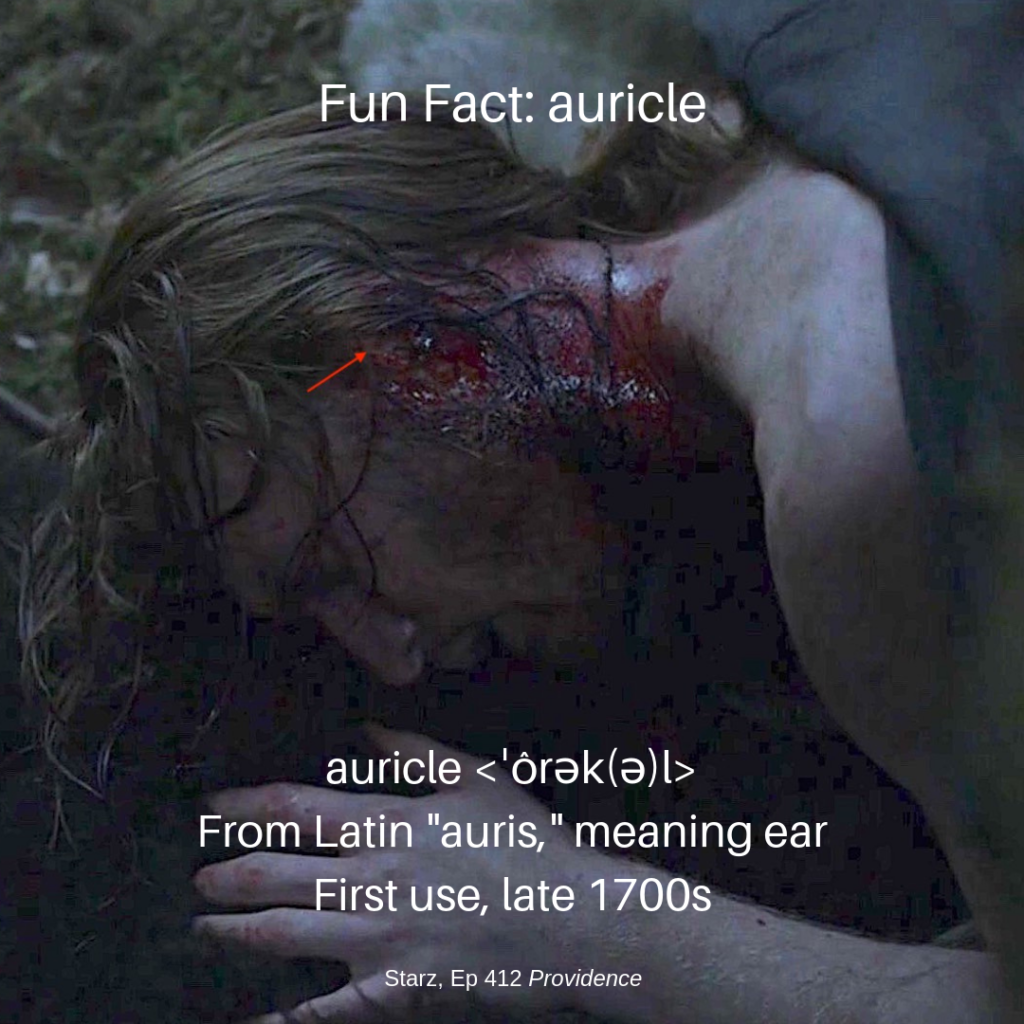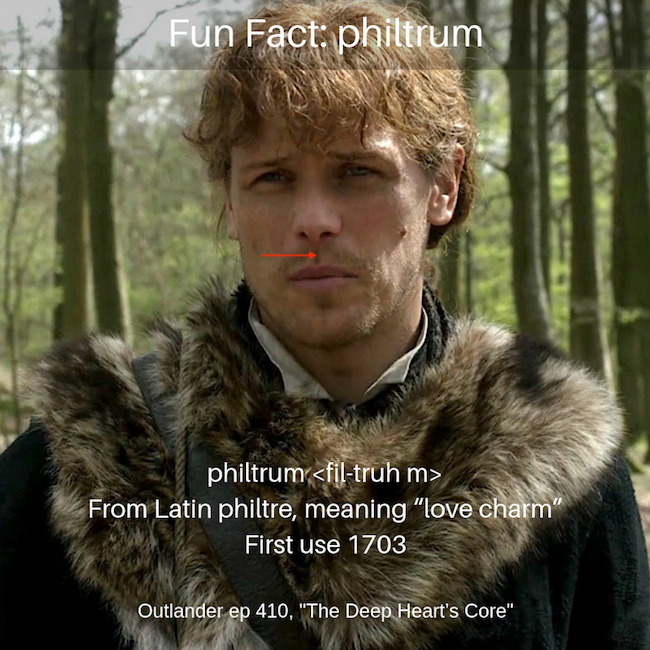
Anatomy def: The auricle is the visible part of an ear.
Outlander def: Poor Father Ferigault’s missing head appendage!
Learn about the auricle and other features of the ear in Anatomy Lesson #24: Hear, Here – the Ear.
Because auricle sounds very much like oracle, these words are sometimes confused. The following may help keep them straight: we climb the mountain to seek wisdom from the oracle, but we listen to her wise words using our auricles. Got it?
The human ear is a composite of three ears: inner ear, middle ear and outer ear. Each auricle (pl. auricula) resides outside the skull and belongs to the outer ear. Middle and inner ears lie inside the skull.
Like many anatomical structures, the auricle bears more than one name. Thus, it is also known as the pinna (Latin meaning “feather” or “wing”). Either term works for human anatomy.
Here’s a wee Fun Fact: Like our fingerprints and venous pattern, no two human auricula (pl.) are alike! Although the curved auricle bears 15+ named ridges and troughs, its collective appearance is unique to the owner.
The auricle is tasked with collecting and funneling sound waves toward the ear canal. But, recent studies reveal more: our auricula also amplify and filter sounds waves to preferentially select those in the frequency range of human speech! How awesome is that?
Humans also have three wee muscles that can move each auricle, although our abilities to do so vary greatly. Just compare our ear wiggling with some amazing mammals who can turn their auricula 180 degrees or even one at a time to collect, modulate and funnel sounds waves. We be whimps. <G>
Try This: Ask someone to take a photo of your auricle, then compare with that of another person. Check overall size, earlobe shape, earlobe attachment, ridges and valleys. They will likely be quite different.
Read about the Father’s grizzly wound in big book four, “Drums of Autumn.” Diana’s description is truly riveting!
Alexandre stirred and moaned. Roger came quickly and knelt by him. He could smell fresh blood, a hot-copper smell he recognized from the slaughtering of the moose.
“Are you hurt? What have they done?”
The answer to that was quick in coming. He turned the half-conscious priest over, to see blood streaming over face and neck in a shiny red glaze. He snatched the priest’s discarded robe to stanch the wound, pushed back the matted blond hair, and found that the priest’s right ear was missing. Something sharp had taken a patch of skin some three inches square from just behind the jaw, removing both ear and a section of scalp.
See Father Alexandre’s shocking wound sans auricle in Starz ep. 412, Providence. The good Father’s convincing whimpers and moans create a deeply moving scene. Help! Providence needed here!
The deeply grateful, Outlander Anatomist
Photo credit: Starz


